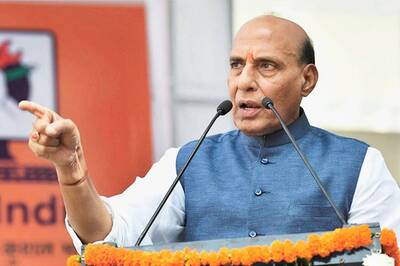
views
LIC Share Price Today: Shares of Life Insurance Corporation of India (LIC), fell for the fifth continuous session. The scrip was down 2 per cent to Rs 786.05, on the BSE on Monday. The shares hit their lowest level since listing, with the market capitalistion (market-cap) of the state-owned life insurer breaching below the Rs 5 lakh crore mark.
The Rs 20,557-crore IPO, India’s largest ever, was subscribed just 2.95 times. LIC had made a weak stock market debut on May 17, 2022 as it listed at nearly 8 per cent below its issue price. With today’s fall, LIC has slumped 17 per cent below its issue price of Rs 949 per share in a week. At the issue price of Rs 949, the m-cap of LIC stood at Rs 6,00,242 crore; based on the listing price on the BSE, the valuation of LIC dipped to Rs 5,57,675 crore, resulting in a loss of around Rs 42,500 crore.
The stock is currently trading at a P/E ratio of an eye-popping 123.55, compared to HDFC Life Insurance Company Ltd which trades at a P/E of 96.81, or ICICI Pru Life Insurance Company Ltd shares which are demanding a P/E of 96.81.
The 13-month persistency ratio stood at 69.24 per cent at the end of Q4 FY22, as compared to 73.94 per cent in the same period last year. The persistency ratio is widely used in the insurance sector which gauges how many policyholders choose to renew their policy after the year-end. This is an important metric to gauge how long policyholders are sticking to their policies. A fall in the same is not a good sign for the insurer.
However, the solvency ratio for FY22 was recorded at 1.85 as against 1.76 in the previous year which is a good sign. A higher solvency ratio denotes higher stability in the company’s financial position to remain solvent.
Should Investors Buy the Dip?
Last week, brokerage firm Emkay Global Financial Services initiated coverage on LIC with a ‘hold’ rating and a target price of Rs 875 – up around 11 per cent from current levels. The brokerage house said its neutral view is underpinned by various factors – low VNB relative to EV, which limits the potential-RoEV to near premium-unwind rate, lower APE growth and margin prospects vs. private sector peers, as LIC’s higher commission costs and opex limit the scope for product and channel diversification.
Another factor is inherent volatility in EV as approx 35 per cent of non-par assets are in equity, and no track record of EV movement under the new fund bifurcation structure, the note stated.
“We use a 0.9x Jun’23 P/EV multiple to arrive at our TP, reflecting a 10 per cent discount to EV for the lack of a track record of EV growth and higher volatility in the EV. While we appreciate LIC’s market-leading position and comfortable valuations, we prefer private sector peers that have better growth, profitability and therefore higher RoEV prospects,” Emkay added.
“LIC’s dominant share in the single-premium group fund management business artificially inflates its market share and deflates some of its cost ratios. Its commission and opex ratios are on the higher side vs. cost-efficient larger private players despite its massive scale. Adjusted for the group single-premium business and LIC’s almost ULIP less product mix, its persistency and surrender ratios are not impressive,” the brokerage said.
The state-run insurance behemoth reported lower profit for the fourth quarter ending March 2022. In its first earnings release post shares listing, LIC posted a 17 per cent decline in consolidated net profit to Rs 2,409 crore for Q4 from Rs 2,917 crore in the same quarter a year ago. The total income of the insurer increased to Rs 2,12,230 crore, from Rs 1,90,098 crore in the same period of the previous fiscal year.
Read all the Latest Business News here
















Comments
0 comment